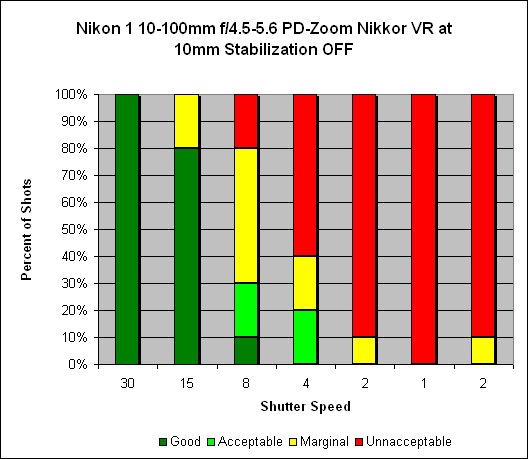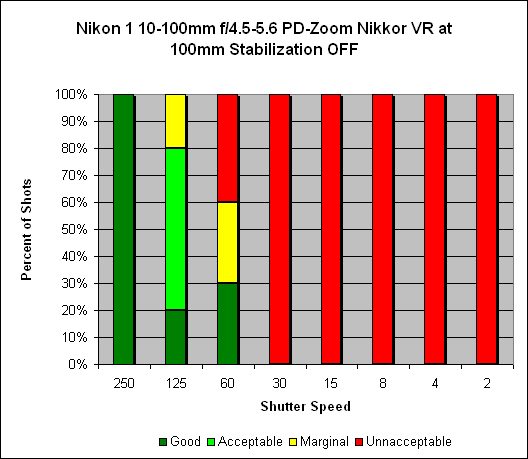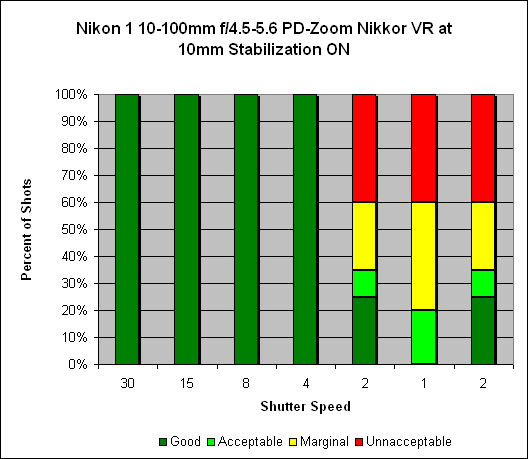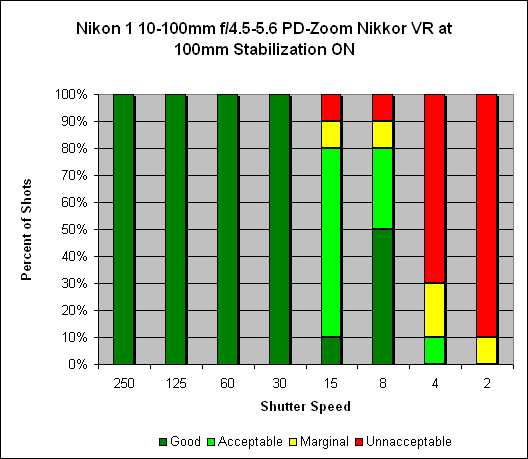Most people tend to think of image stabilization as being mainly for telephoto lenses. While it's true that their longer focal lengths tend to magnify the effects of camera shake, image stabilization can provde a very useful assist at wider angle focal lengths as well; anyone who's ever tried to blur the image of a waterfall, while keeping the surrounding landsape tack-sharp knows exactly what I'm talking about.
At 10mm, the lens shows a solid two stops of hand-holding stabilization. At this point, you're not worried so much about stopping the movement of the camera, as you are about stopping movement of the subject, so it isn't as useful as it might seem, with one exception: shooting movies. Still, it's nice to be able to get consistently sharp results at shutter speeds as low as 1/4s, and surprisingly, we even pulled off some excellent shots with speeds as low as two seconds.
 |
| Mouse over this chart to show results with IS activated. |
Zoomed in to 100mm, we see about three and a half stops of stabilization. We would normally expect the typical shooter, without stabilization, to get consistently sharp images at 1/125s (see the "one over focal length" rule of thumb); however, the necessity to hold the J1 out in front as there is no viewfinder, coupled with the front-heavy weight of the lens, made this impossible: Consistently sharp shots were only secured at 1/250s. With stabilization on, the shooter can get consistently sharp images at speeds as low as 1/30s. Similarly to what we found at the 10mm setting, we found good shots as slow as 1/8s but this was really hit or miss.
 |
| Mouse over this chart to show results with IS activated. |
IS systems tend to provide more benefit to less-stable shooters than very steady ones, so most users will see the same or greater amounts of shake reduction as we measured here. You can read more about our IS test methodology here: SLRgear IS Test Methodology, v2.

